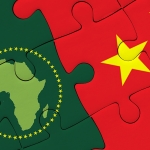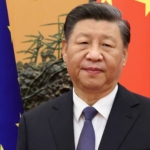Over the past decade China has grown enormously, redefining its role in economic and geopolitical level and assuming the characteristics of a true global power. Despite the great changes and the fast pace that has marked them, the Beijing strategic imperatives continue to be the same, at least in part.
On top of the list is still the maintenance of internal unity in regions where prevails the Han ethnic group, located mainly along the two major rivers, the Yellow and the Yangtze. These territories are home to the bulk of China’s population and the main sectors of industry and national agriculture. Keeping the unity in this macro-areas is vital to ensure the cohesion of the Asian giant and to consolidate the role of the Communist Party of China as the hegemonic force. The goal is not easy, though. Uniformity is only theoretical, since the majority ethnic group in the country differs internally through cultural, social and economic articulations that complicate the search for a balance. The economic slowdown also contributes to make the picture even more complex.
Another key challenge concerns the control of the buffer regions, those more remote, inhabited in the past by nomadic populations, and characterized, for a long time, from poorly defined borders. Over the centuries the China of the Han fought with its neighbors, finally being able to integrate many peripheral regions, from Manchuria to Mongolia, passing through Xinjiang, Tibet and Yunnan. Today these areas are of strategic importance to Beijing and help make the country the power that is, but pose multiple challenges for the central government in terms of cohesion and ethnic policies.
The third link in the chain of priorities refers to the protection of the coasts, which cover about 18,000 kilometers from Vietnam to North Korea. For much of its history China has relied heavily on the inner dimensions and land trade routes to grab the necessary resources, paying little attention to the seas. For a long time, then, China did not want to have a powerful naval force, focusing on the defense of the coast from the ground and developing alternative navigation systems, through a complex network of internal channels. Today the situation has changed considerably, and China is strengthening its military fleet. In these waters, however, the distance with the American adversary is still considerable and defense policies still focus on strengthening coastal defenses.
Alongside these three historical imperatives, the economic growth of the past decade has revealed a fourth strategic objective: the defense of trade routes, resources and markets from foreign interference. Today China imports much as exports, is no longer independent as before. The foreign trade has become vital, as well as external investment to acquire technology and know-how. The affirmation of this new paradigm sought greater military, financial and policy presence internationally and has led inevitably to a more direct confrontation with the US and its strategic interests.
The US, on the external level, consider as vital the control of the oceans and the containment of emerging powers, China in the first place. Beijing, for its part, believes that its economic stability may be jeopardized by the American dominance on the seas and trade routes and is strengthening the fleet to increase the weight of his presence.
The strategic interests of the two powers collide and from the outcome of the battle will depend the future geopolitical order. The main game now is in the South China Sea where China claims ownership of some archipelagos to extend its control over the area and limit US hegemony on the southern Asia seas. The US sees this expansionist policy as a threat to freedom of navigation and as a signal of excessive aggression on the part of a rising power, more and more difficult to contain. Both countries have their own reasons and both are pushed by the imperative defense of their strategic interests.
The opposition has now extended also to the field of international finance. Thanks to the dollar power and to the influence that this guarantees in international markets, the US has always been able to dictate the rules of the international economy, relegating China to a secondary role. To break the system, China is pushing for the creation of an alternative trading and international finances system and shall seek to increase its role in the World Bank and other international financial institutions.
Ultimately, the crucial interests of China and the United States are entering in conflict at different levels, both militarily and economically, and none of the contenders can simply wait for the other making his moves. The risk of waiting would be likely to exceed the cost of action. The outcome of the battle is not yet predictable and we do not know how the current strategies will evolve. What is certain is that one of the contenders, if not both, will have to give up part of its strategic objectives.
Luca Marchesini







